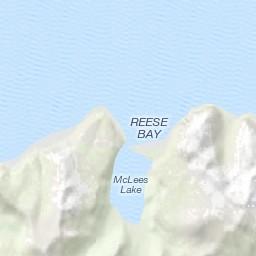Wislow Sockeye Run Slowing Down

Friday, July 15 2011
The sockeye salmon run is winding down at Wislow.
Over the past three days, just over 800 salmon passed through the weir at McLees Lake. Last week, reds were coming in at a rate of roughly 1,500 per day. That bring the sockeye season to a somewhat early end.
“The season usually lasts another week at least,” say Derek Hildreth, a fisheries biologist with the U.S. Fish and Wildlife Service
Fish and Wildlife typically close down the weir after getting three consecutive days of low escapement numbers. But right now, the agency is planning to keep the weir operating through Wednesday.
“We were preparing to pull it pretty darn early,” says Hildreth. “So it’s not going to hurt anybody or anything to keep the weir open for another couple of days.”
And that extra data might actually be helpful. The Fish and Wildlife weir has operated since 2001, and this is the last year that funding is guaranteed for its operation. The size of the runs has varied substantially over the past decade, ranging from just under 9,000 salmon to well over 100,000. Given that there isn’t enough data to establish a clear pattern, it’s hard to determine what the run will do next.
“Ten years in some cases could be enough data, if it was like the same thing every year. In this case, it appears over the last eight or ten years we saw a cycle,” says Hildreth. “Unless the weir were to be open for tens of years, we wouldn’t be able to make that prediction. ”
Right now, the most popular theory is that the boom-and-bust nature of the Wislow run could be attributed to over-escapement. When big runs come through, they put pressure on the ecosystem and can make it difficult for young fish to survive due to lack of food.
Still, even though Fish and Wildlife would need to do more counts before they could model the run, Hildreth says that they have been able to reach some important conclusions with the information they have.
“We’ve learned that there’s a significant amount of fish. Even 8,500 is a pretty good chunk of fish when you consider that the subsistence harvest is 2,000 or 3,000,” says Hildreth. “So, we’re not even talking about 50 percent of the run on the worst year.”
The coho run will begin in August.



